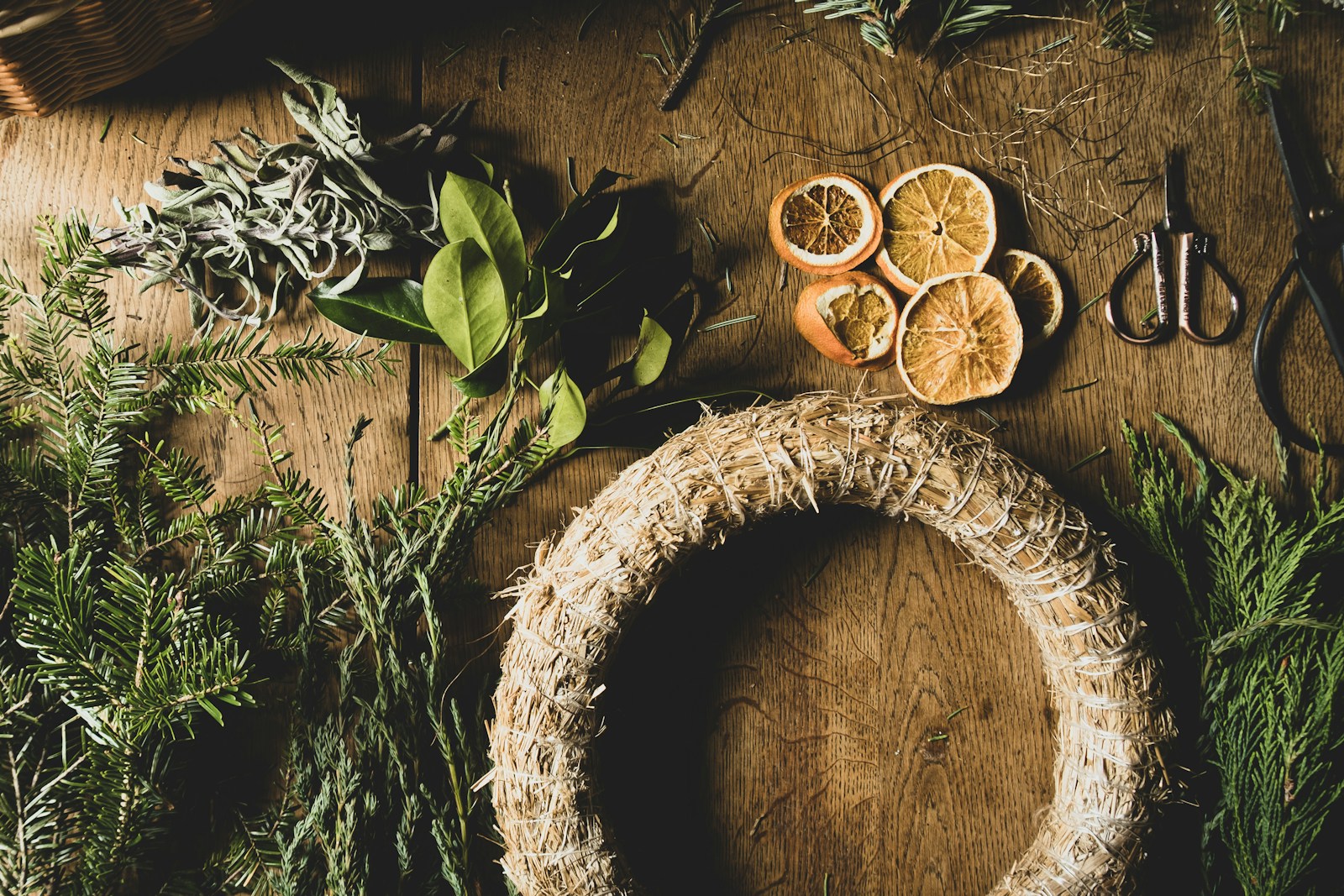There’s something deeply satisfying about creating beautiful decorations using materials gathered from the natural world around us. Crafting a wreath with found natural materials not only connects us to nature’s rhythms and seasonal changes but also results in a unique, sustainable decoration that brings the outdoors in. Whether you’re looking for a meditative creative practice, a budget-friendly decorating solution, or simply a way to showcase the beauty of your local environment, making your own natural wreath offers endless possibilities for creativity and personal expression.
This guide will walk you through everything you need to know to create stunning wreaths using materials you can find in your backyard, on nature walks, or even from kitchen scraps.
Understanding the Appeal of Natural Wreaths
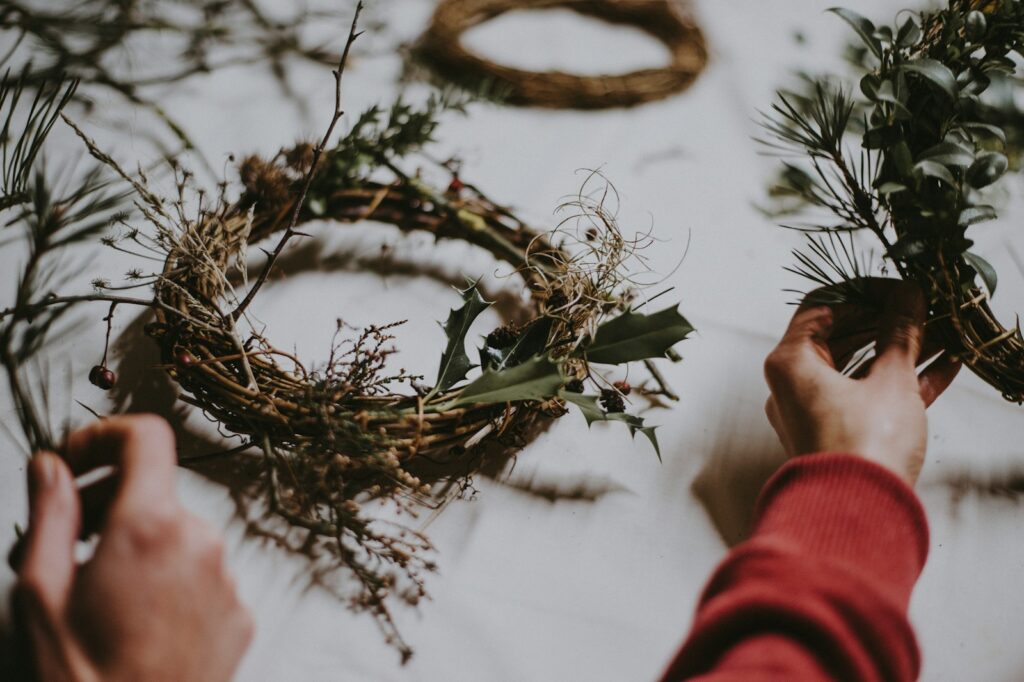
Natural wreaths have been created for centuries across many cultures, symbolizing the cyclical nature of life and marking seasonal celebrations. Unlike mass-produced plastic decorations, natural wreaths decompose after use, making them an environmentally friendly choice that aligns with sustainable living practices. Each natural wreath tells a story about the place and time it was created, showcasing regional plants and reflecting the specific season in which the materials were gathered.
Beyond their visual appeal, natural wreaths often bring wonderful scents into your home—from the spicy aroma of pine to the sweetness of dried flowers or the earthiness of autumn leaves—engaging multiple senses in a way that artificial decorations simply cannot.
Essential Tools for Wreath Making

Before venturing out to collect materials, gather the tools you’ll need for wreath construction. Start with a sturdy base—options include a metal wreath frame, grapevine wreath, or a DIY frame made from flexible branches like willow, grapevine, or dogwood twisted into a circle and secured with floral wire. Garden pruners or sharp scissors are essential for cutting stems and branches without crushing them, ensuring clean cuts that help materials last longer.
Floral wire or thin gauge wire serves as your primary binding material, while a hot glue gun provides reinforcement for delicate items that might not secure well with wire alone. Consider also gathering twine, ribbon, and pipe cleaners as alternative binding materials that offer different aesthetic effects while providing structural support to your creation.
When and Where to Forage
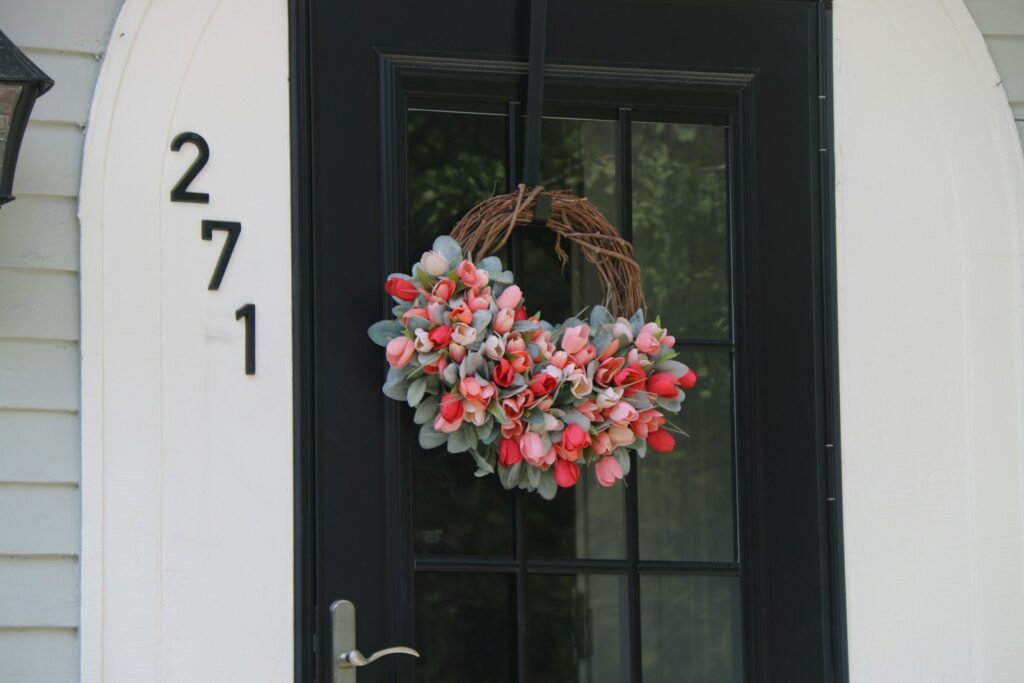
The best time to forage for natural materials is during dry weather, as wet materials may develop mold when used in wreaths. Early morning is ideal for collecting flowers and herbs when they’re at their freshest and most aromatic. Consider exploring diverse environments to gather a variety of materials—woodlands offer pinecones, moss, and interesting twigs; meadows provide grasses and wildflowers; beaches yield driftwood and interesting shells; and even urban parks can surprise you with seed pods, berries, and fallen branches.
Always practice ethical foraging by taking only what you need, never removing entire plants, avoiding rare species, and respecting private property and protected natural areas. Remember that your own garden and kitchen can also provide excellent wreath materials, from herb clippings and flower prunings to citrus peels and cinnamon sticks.
Spring Wreath Materials

Spring wreaths celebrate renewal and fresh growth, making them perfect showcases for the season’s emerging beauty. Look for flowering branches like cherry, apple, or forsythia, which can be gently bent into circles to form natural wreath bases or added as striking accents. Fresh spring flowers including daffodils, tulips, and violets can be incorporated for short-term wreaths, while longer-lasting materials might include moss, ferns, and small pinecones from the previous fall.
Spring-specific treasures worth seeking include pussy willows with their soft catkins, tender new growth on evergreens, and even empty bird’s nests that have been abandoned after use (never take active nests). For a sustainable spring wreath that will last beyond a few days, consider using dried flowers from the previous year alongside fresh greenery, creating a beautiful balance between preserved and living elements.
Summer Wreath Materials

Summer offers an abundance of vibrant materials perfect for creating lush, colorful wreaths that capture the season’s energy. Grasses at their full height, especially those with interesting seed heads like fountain grass or quaking grass, provide wonderful texture and movement. Herbs at their peak such as lavender, rosemary, sage, and thyme not only look beautiful but also release delightful aromas when brushed against or warmed by the sun.
Summer flowers including roses, hydrangeas, yarrow, and sunflowers can be incorporated fresh or hung to dry for longer-lasting wreaths. Don’t overlook summer fruits and vegetables—small ornamental gourds, dried corn husks, chili peppers strung together, and even artfully dried citrus slices add unexpected elements that celebrate summer’s bounty while creating visual interest in your wreath design.
Autumn Wreath Materials
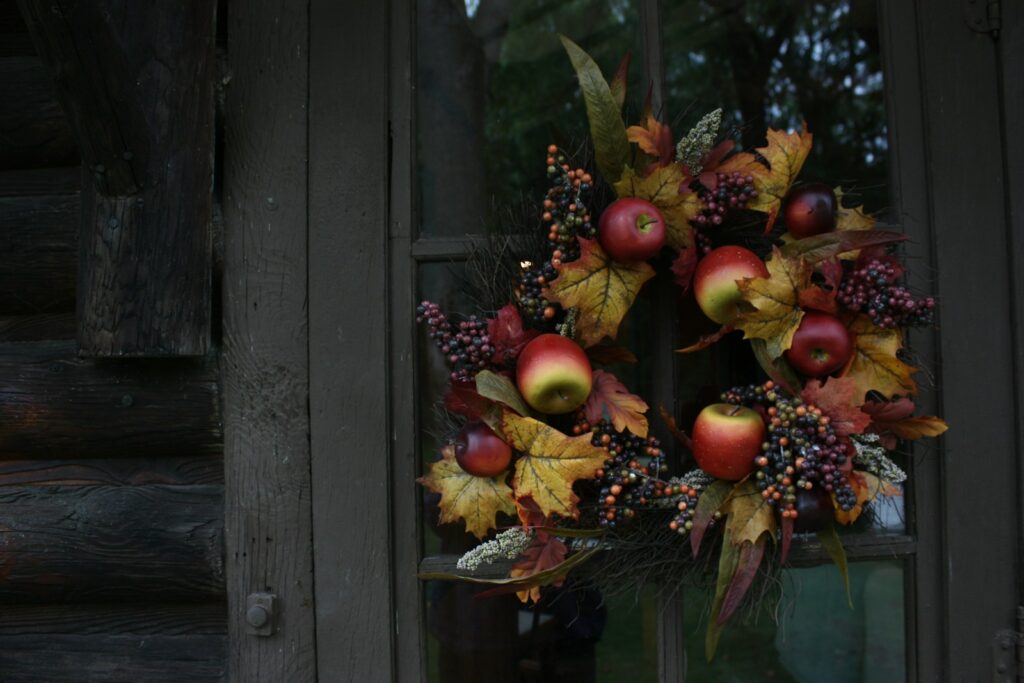
Autumn provides perhaps the most iconic wreath-making materials with its rich colors and interesting textures. Colorful fallen leaves from maple, oak, beech, and aspen create the quintessential fall palette of reds, oranges, and golds—collect them when they’re freshly fallen and still pliable, then press between newspaper pages under heavy books to preserve their color and flatten them for easier attachment. Seed pods and nuts including acorns, chestnuts, hickory nuts, and pinecones add wonderful dimensional elements and can be left natural or painted for different effects.
Branches with berries such as rose hips, hawthorn, and mountain ash provide pops of color that persist through the season. Consider also incorporating small apples, miniature pumpkins, and gourds, which can be preserved with a light coat of clear matte spray sealer to extend their decorative lifespan through the season.
Winter Wreath Materials
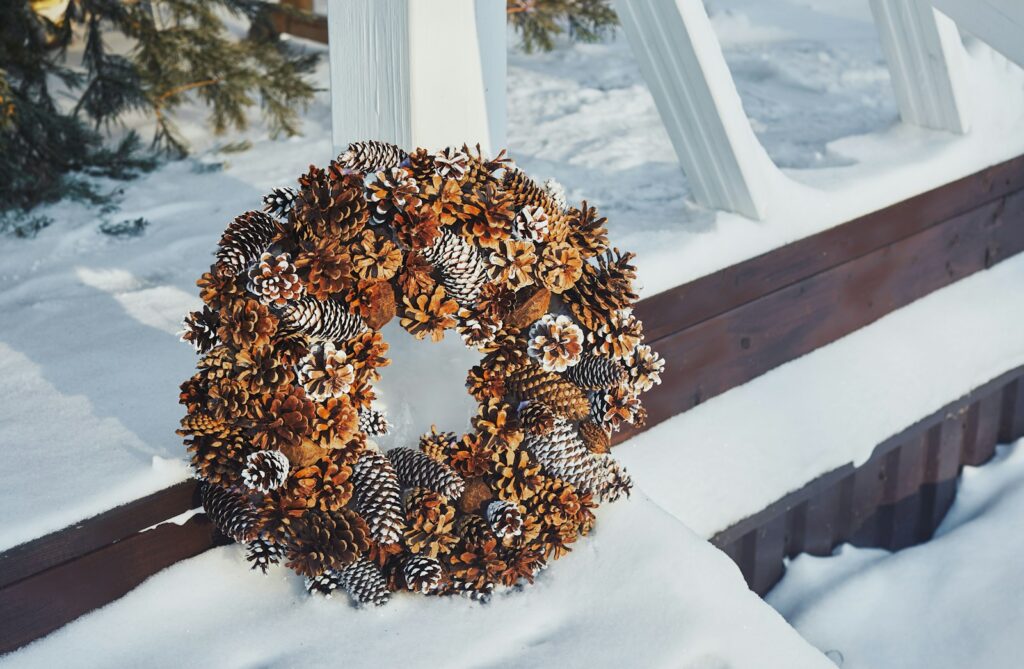
Winter wreaths celebrate the quiet beauty of dormancy and the architectural qualities of plants in their most stripped-down form. Evergreen branches including pine, fir, cedar, holly, and boxwood provide essential structure and a rich backdrop of green when other plants have lost their leaves. Bare branches with interesting forms, particularly those with unusual bends or lichen growth, create dramatic silhouettes against walls or doors.
Winter berries that persist through cold weather, such as holly, beautyberry, and winterberry, add welcome color pops against evergreen or neutral backgrounds. Look also for dried hydrangea heads, teasel, thistles, and ornamental grass plumes, which capture frost beautifully and add ethereal texture to winter designs, transforming your wreath into a celebration of winter’s subtle, sophisticated palette.
Drying and Preserving Materials

Many natural materials need proper drying or preservation to maintain their beauty in wreath form. For flowers and herbs, hang them upside down in small bunches in a dark, dry area with good air circulation—direct sunlight will fade colors, while excessive humidity may cause mold. Glycerin preservation works wonderfully for leaves and some branches, creating flexible materials that won’t crumble; simply mix one part glycerin with two parts warm water, place stem ends in the solution, and let them absorb it until leaves change to a slightly darker color.
For fruits like oranges, apples, and lemons, slice them thinly and dry slowly in an oven at its lowest setting or use a food dehydrator for even drying. Consider using silica gel for perfect preservation of flower blooms—completely cover flowers in silica gel inside an airtight container for several days, then gently remove and brush off any remaining crystals to reveal perfectly preserved specimens.
Basic Wreath Construction Techniques
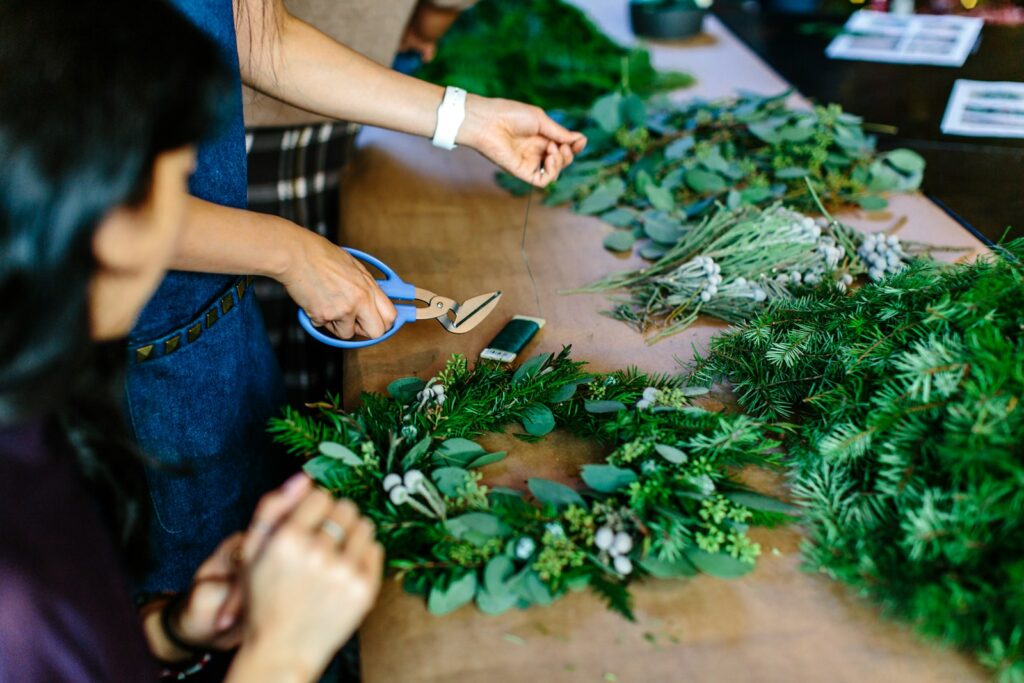
The foundation of successful wreath-making lies in creating a secure base and understanding how to attach materials effectively. Begin with your chosen wreath form—whether purchased or handmade—ensuring it’s sturdy enough to support your planned materials. The standard technique involves grouping materials into small bundles or “picks,” securing each bundle with wire at its base, then attaching these bundles to your wreath frame, overlapping each new bundle to cover the stems of the previous one.
Work in one direction around your wreath, maintaining consistent density and regularly stepping back to check for balance and gaps. For a more natural, free-form approach, try the tucking method where individual stems are simply tucked into a grapevine or moss-covered base, adjusting as you go for the desired effect—this works particularly well with sturdy materials like evergreen branches, dried grasses, and woody stems.
Wreath Design Principles
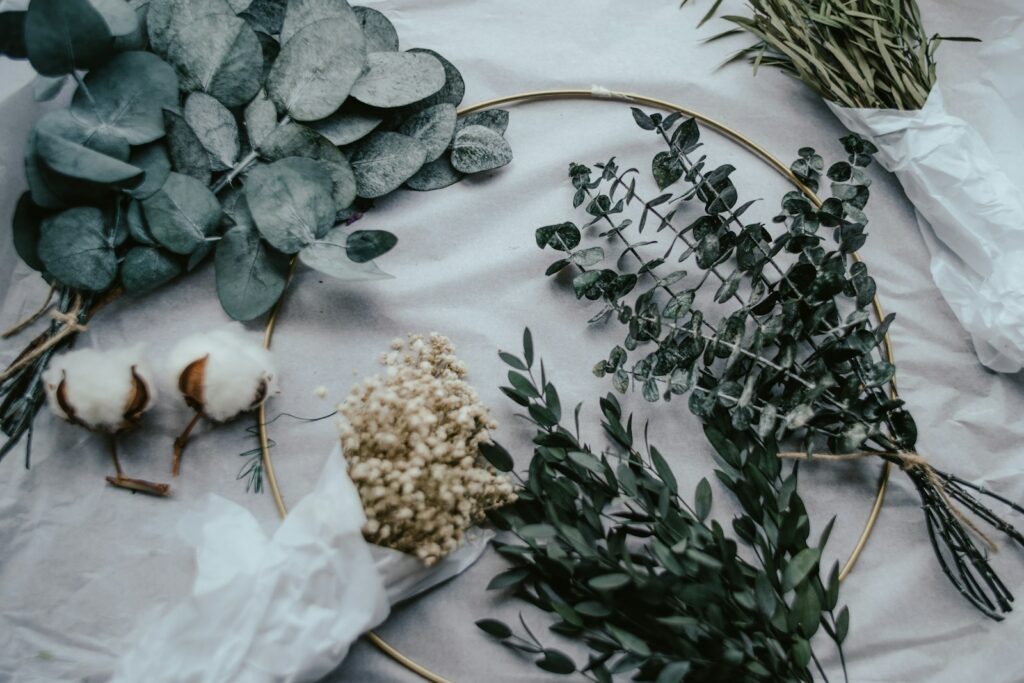
Creating a visually appealing wreath involves understanding basic design principles that help unify your creation. Consider color theory—monochromatic wreaths using various shades of one color create sophisticated, harmonious designs, while complementary colors (opposites on the color wheel) create vibrant, eye-catching contrast. Texture plays a crucial role in adding interest—combine smooth materials like magnolia leaves with rough elements like pinecones, or contrast fluffy seed heads with sleek berries.
Pay attention to scale and proportion, using larger elements as anchors and smaller items as fillers, while varying sizes creates visual movement around your wreath. Perhaps most importantly, embrace asymmetry and imperfection—natural materials have inherent irregularities that contribute to the organic charm of handmade wreaths, so allow some controlled randomness rather than striving for machine-like precision.
Special Techniques for Unique Effects

Beyond basic construction, several special techniques can elevate your natural wreaths to another level. Try layering by creating a base layer of evergreens or dried grasses, then building up with progressively smaller and more delicate materials, creating depth and complexity. Incorporate unexpected elements like bird feathers, interesting stones, or small air plants for wreaths that will be displayed in protected areas. Experiment with clustering similar materials in groups around your wreath to create rhythmic patterns and focal points—for instance, grouping pinecones together rather than distributing them evenly.
Consider weaving techniques where flexible materials like grapevines, willow branches, or tall grasses are actually woven together without a separate base, creating an integrated structure that becomes both form and decoration, resulting in a wreath with a particularly organic, hand-crafted quality.
Displaying and Caring for Natural Wreaths
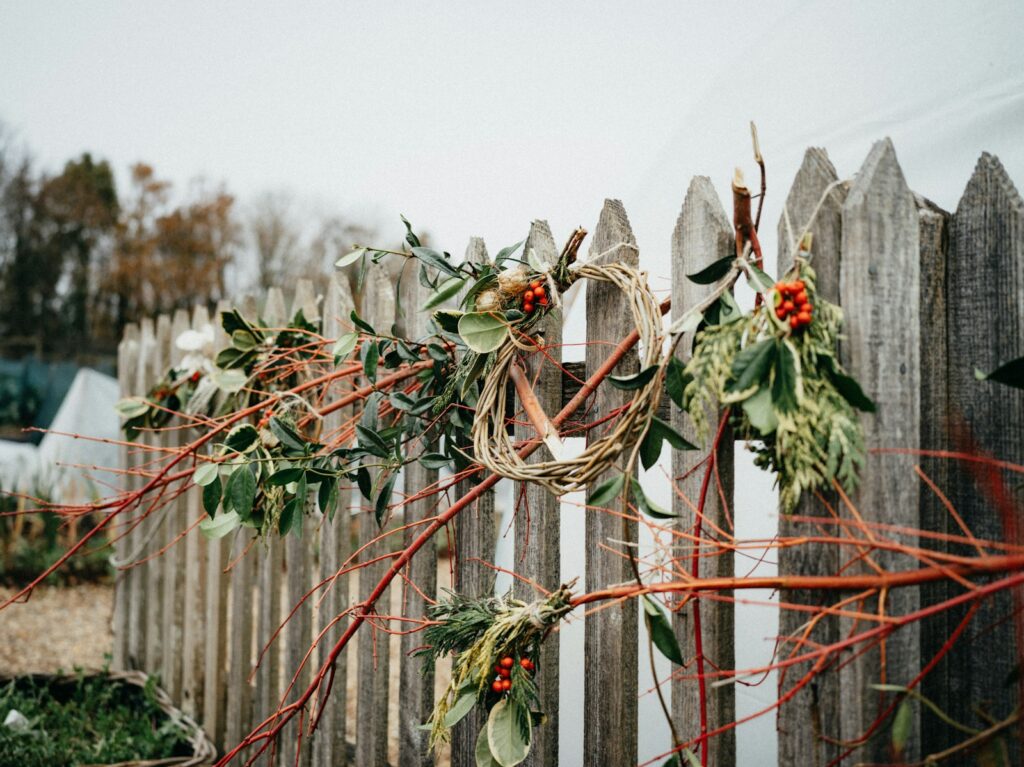
Proper display and maintenance can significantly extend the life and beauty of your natural wreath. For outdoor display, choose a location protected from direct rain and harsh afternoon sun, such as under a porch overhang or on a north-facing door. Indoor wreaths should be kept away from heat sources including fireplaces, radiators, and sunny windows, which can quickly dry out and damage natural materials. Mist wreaths made from moss and evergreens occasionally to maintain freshness, but avoid getting dried materials wet as this can lead to mold growth.
Consider gently refreshing your wreath throughout its display period by replacing any materials that have deteriorated while leaving the base intact—this approach allows you to transform a spring wreath into summer, or an autumn wreath into winter with minimal effort, extending its usefulness across seasons.
Environmental and Ethical Considerations

Creating sustainable natural wreaths means crafting with care for both beauty and the environment. Avoid invasive species, as their seeds can spread when wreaths are discarded. Harvest mindfully—berries, seeds, and nuts are vital winter food for wildlife, so gather sparingly or use ornamental varieties. Never collect endangered plants, and always check local regulations before foraging on public lands. After the wreath’s display life, remove wires or artificial parts so the natural elements can be composted, returning nutrients to the earth.
Natural wreath-making connects us to seasonal traditions and encourages mindful interaction with nature. By sourcing local, sustainable materials, each wreath becomes a unique reflection of time and place. The process—gathering, crafting, and appreciating—offers creative fulfillment and a deeper connection to the natural world. Whether displayed indoors or out, a handcrafted wreath serves as a beautiful, eco-conscious celebration of the seasons and a reminder of our place within nature’s cycles.

